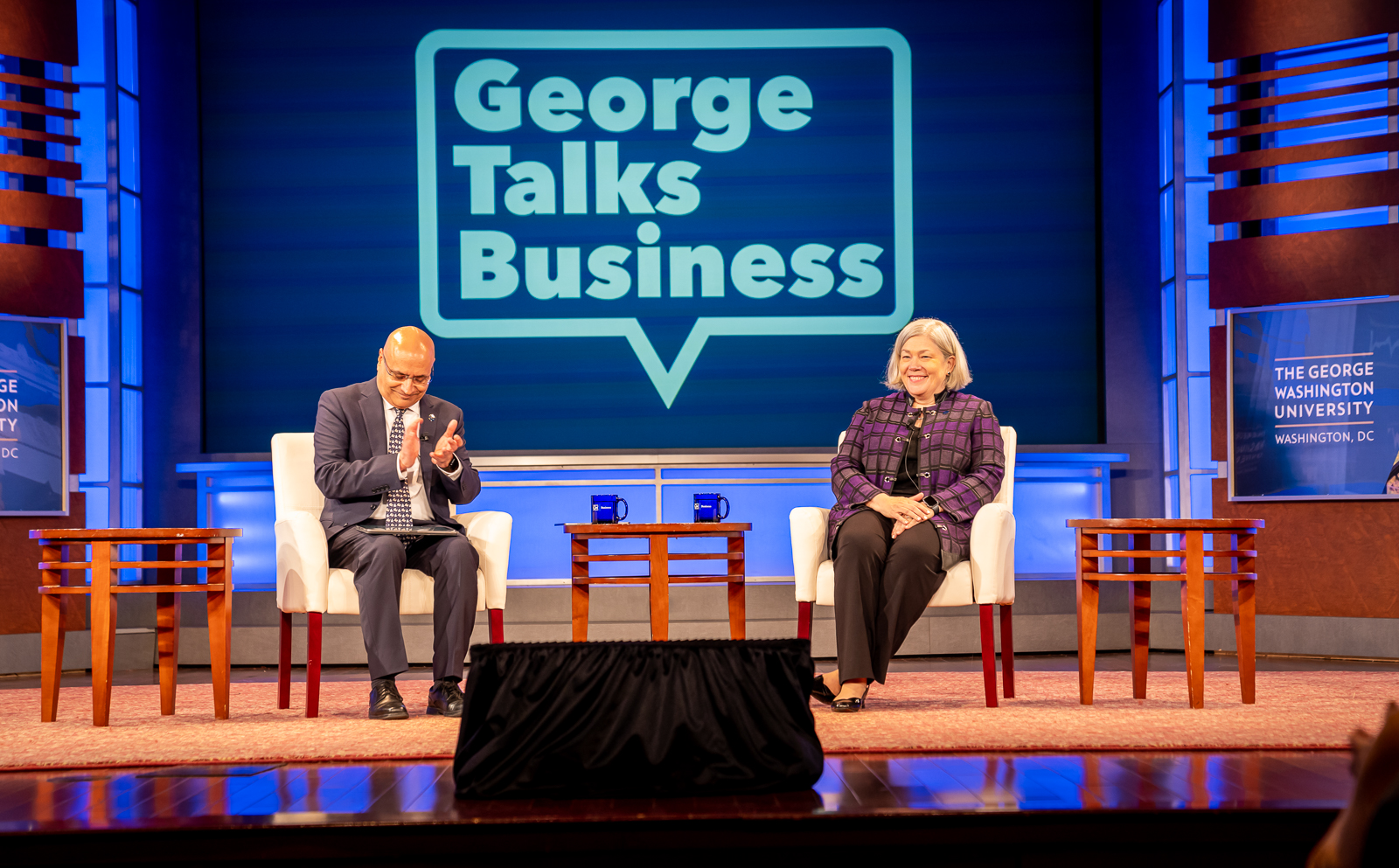The impact of systemic racial bias in the home appraisal industry has received heightened attention in recent years as growing research found that properties of Black homeowners are often under-valued, and homes in Black neighborhoods are also appraised lower compared to white neighborhoods.
As Black homeowners have shared their stories of receiving widely different valuations before and after staging their homes to remove traces of race, government officials have vowed to address the problem.
The issue of appraisal bias being a factor in worsening the wealth gap for Black Americans was one of many topics covered at the latest George Talks Business segment, hosted by the George Washington University School of Business (GWSB).
Vanessa Perry, the interim dean for GWSB and a professor of marketing, strategic management, and public policy, moderated the discussion with Sharifa A. Anderson, the senior vice president and the chief diversity and inclusion officer of the Federal National Mortgage Association (Fannie Mae).
The discussion held at Jack Morton Auditorium centered on broadening housing access and creating a more inclusive housing finance system.
Perry acknowledged Fannie Mae’s work on appraisal bias and posed a question to Anderson Thursday evening about what appraisal bias is and the concerning impact it is having on Black homeowners.
Anderson explained that in instances where appraisals may be required in connection with financing of a home, studies indicated that Black households were “finding that the value of their property was much lower than that of white households.” “It’s such that studies were being done where [households] would remove any evidence of ethnicity or race to understand how that shifted an appraiser's valuation of the property,” Anderson said.
Anderson elaborated that understanding how bias shows up in housing finance has led to Fannie Mae leveraging its position in the marketplace to develop more innovative solutions. Anderson said one of the ways Fannie Mae is addressing appraisal bias is by using artificial intelligence (specifically natural language processing models) to understand the extent to which prohibited terms (good neighborhood, desirable location or pride of ownership) are showing up in appraisals.
Fannie Mae is also looking to support a more diverse appraisal industry through their Appraiser Diversity Initiative, which was launched to raise awareness of real estate appraisal career options through outreach events and create opportunities for overcoming barriers to entry in the field.
Perry also asked Anderson about steps Fannie Mae has taken to contribute to a more inclusive housing industry. Anderson highlighted Fannie Mae’s Future Housing Leaders program, which connects students from diverse backgrounds to internships in housing finance and complements their work experience with education specific to the housing industry.
“Diversity and inclusion-related issues have been huge topics in the housing industry,” Perry said. “So, I'm curious, if you could give some examples of things that Fannie Mae is doing to expand diversity and inclusion in the housing industry. As it is, because of its sheer size, you have a tremendous impact on the way the industry operates.”
Anderson said Fannie Mae has shifted how it evaluates the credit of a potential borrower by expanding the process to also take rental history into account.
Anderson acknowledged that considering positive rent history has been a “game changer” for renters who may have a limited credit history. Using rent payment histories provides a more inclusive risk evaluation. “One of the things I think we're really proud of is understanding how [households] bank differently, how they leverage credit differently and the factors that can tell us a more complete story,” she said.
Fannie Mae was first charted in 1938 by Congress to provide stability and liquidity for the nation’s mortgage market.
Anderson said as Fannie Mae works to put values of diversity and inclusion into practice, how they provide liquidity has changed.
“I think we are thinking more deeply today than we ever have before about what it means to provide liquidity and the way that we're serving all communities, particularly communities that have been underserved,” Anderson said.
She explained that championing diversity and inclusion means creating a culture where people from all backgrounds can show up in authentic ways and contribute to decision-making and innovation, which is why representation is so important.
“More than half of our workforce identifies as a person of color. When we look at our leadership team, we’ve got tremendous diversity there,” Anderson said. “The reason I think those things are important is because as we look at the demographics of this country and what we know is ahead, and even present today, there is a tremendous opportunity to serve a broader set of households. The diversity together with the kind of culture we have created at Fannie Mae provide room for people to bring more to our workplace.”
She added that a diverse staff is important to understanding the challenges and obstacles that communities are experiencing now.
“We're on a journey where we're listening and learning and constantly innovating,” Anderson said.





